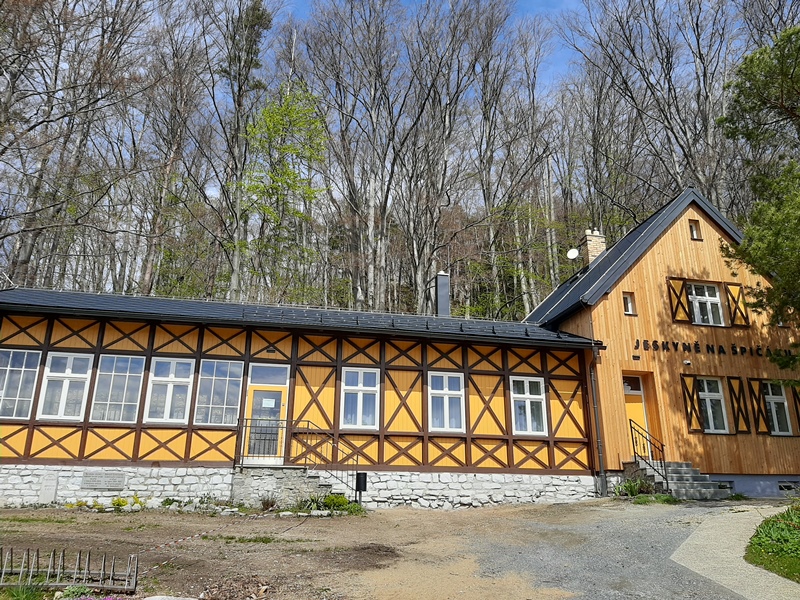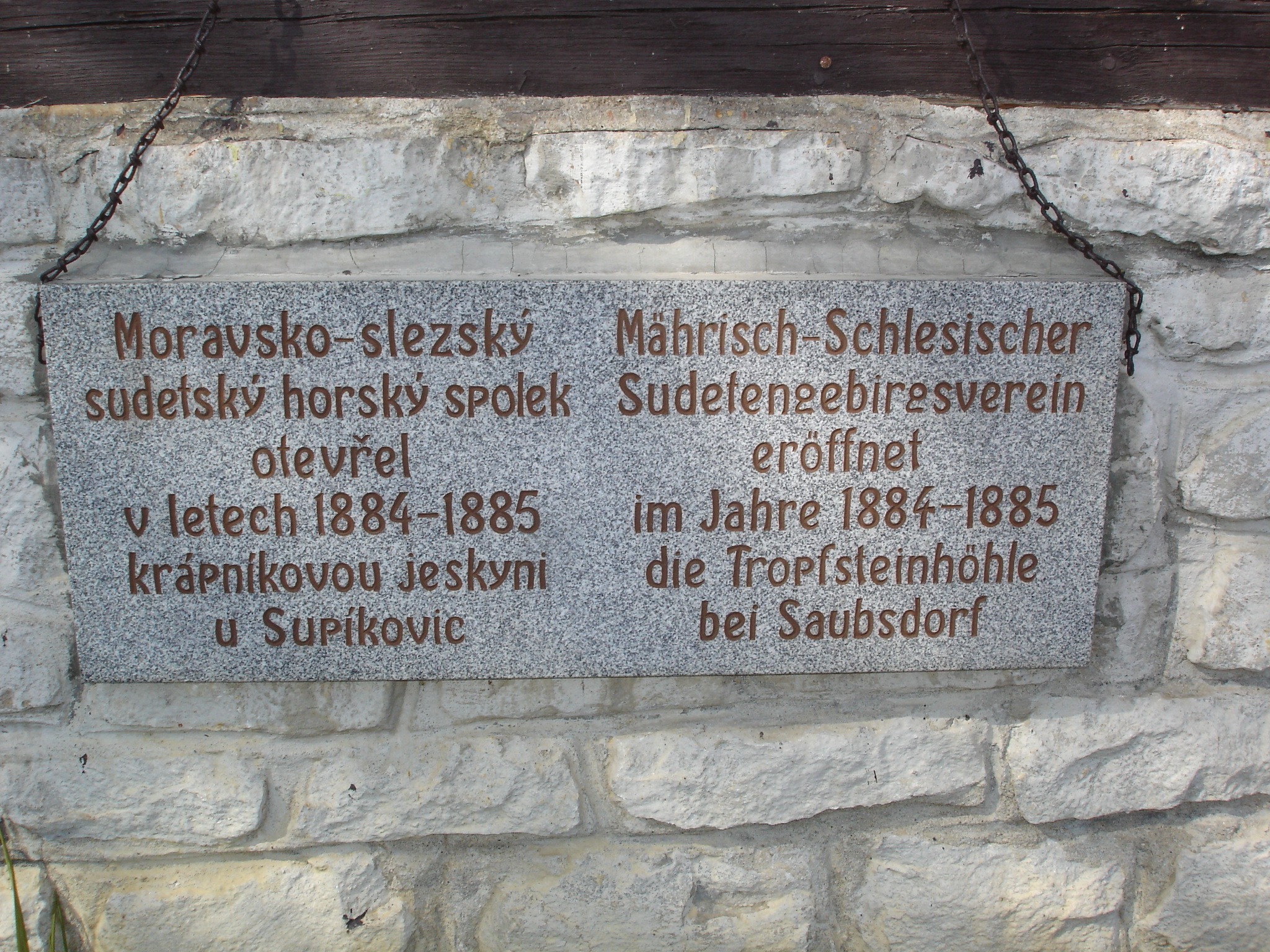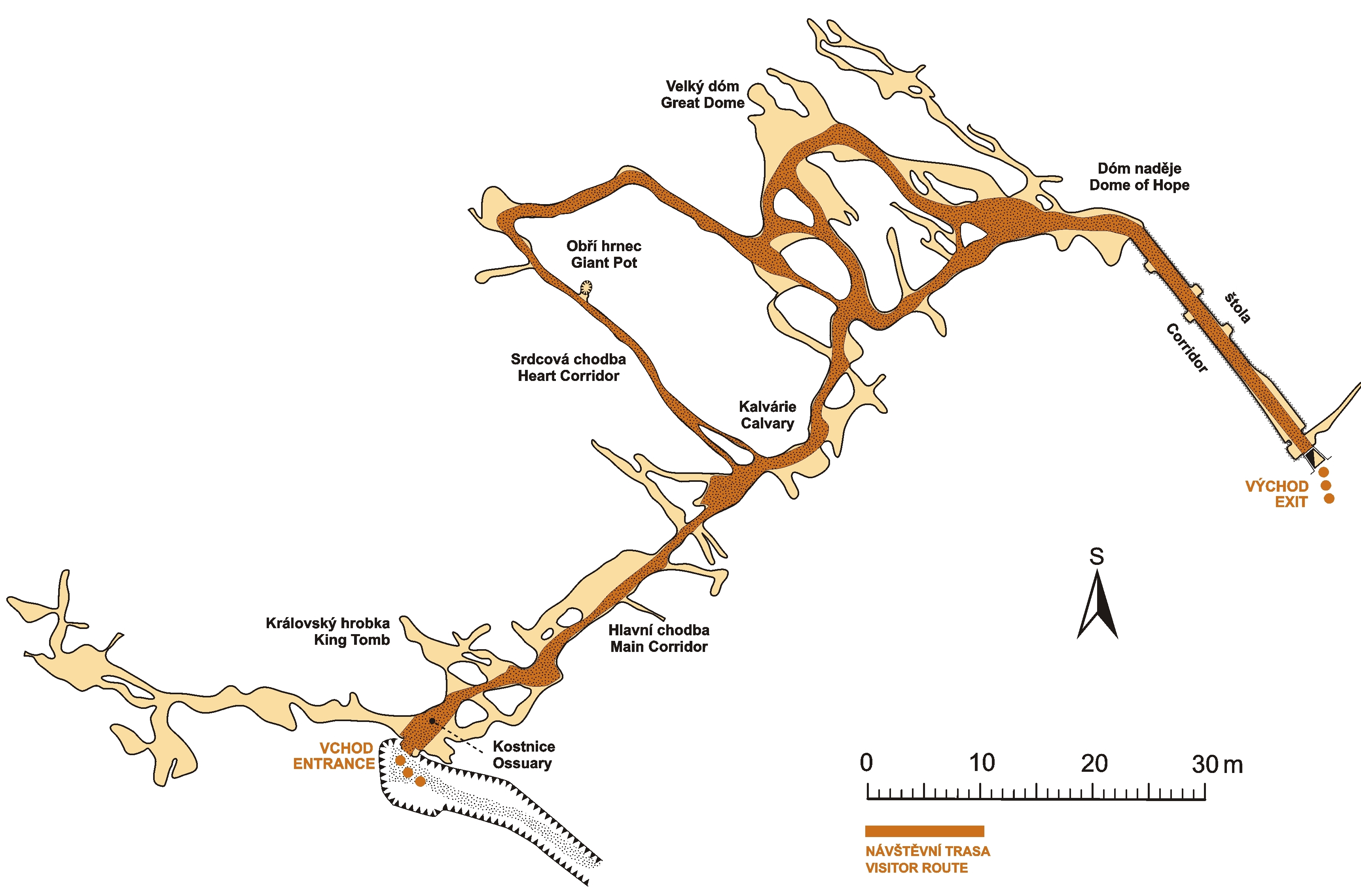Na Špičáku Cave - visit

The cave visitors are welcomed by a picturesque corner with an historical administration building under the Velký Špičák Hill with beech wood on rocky slopes. Under good visibility conditions there is a beautiful view of the mountain range of the Hrubý Jeseník with the saddle called Červenohorské sedlo and the nearby Zlatý Chlum lookout tower. A stony footpath between ancient beeches leads into the deep rocky ravine with the staircase to the original cave entrance known since the Middle Ages. The surrounding rocks are affected by historic mining of marble blocks and the hillsides are ancient spoil heaps from small quarries. After several steps the narrow corridor that was not made accessible branches out from the entrance passage in the northwest direction to the so-called Lower Level with a 10 m deep abyss and a lake at the bottom (during floods in 1997 water rose up to the cave route). Just a little further on you can look into the Ossuary abyss named after the bones of small Pleistocene vertebrates were found. Then the Royal Tomb – a limestone block covered with a sinter layer that resembles a sarcophagus – follows on the left side.
There are numerous historical writings and drawings on the walls and ceilings of the whole cave. The crossing of corridors called "Calvary" is the most interesting place in the labyrinth. In addition to typical heart-shaped profiles of corridors there are also many significant records on the walls. You can also see a remarkable drawing here of two people praying under the cross – Calvary and a cross with a crescent moon. The age of the drawing is not known, but it used to be associated with an alleged visit of the Czech Brothers, who sought refuge here after the Battle of White Mountain.

The path then continues through the Double Heart Corridor past an 8-meter-deep shaft and through an artificial connecting tunnel to the biggest space of the cave system – Big Dome, called also Ripper Hall after the author of the first map of the cave. The Dome was formed on the crossing of several passages, one of which is remarkable with a distinctive heart-shaped profile. Beyond the Big Dome the last area open to the public follows – Chamber of Hope with a narrow side passage called "Corridor of Hope". A continuation of the cave system was expected here by explorers, but all attempts to discover it have failed so far – the passages fade away. Also in the Corridor of Hope there are many old writings and drawings.
The visitors leave the underground through the artificial tunnel made in 1954, and they return to the administration building through the former quarry. In the niches of the tunnel there is an uncovered geological contact of the Supíkovice marbles with the granite of the Žulová massif and the metamorphic rocks of its exomorphic zone. There are also examples of the polished Supíkovice marble that has been mined in the nearby quarry as a quality decorative and tiling stone. The tunnel also enables access to the barrier-free (wheelchair accessible) part of the cave system.
